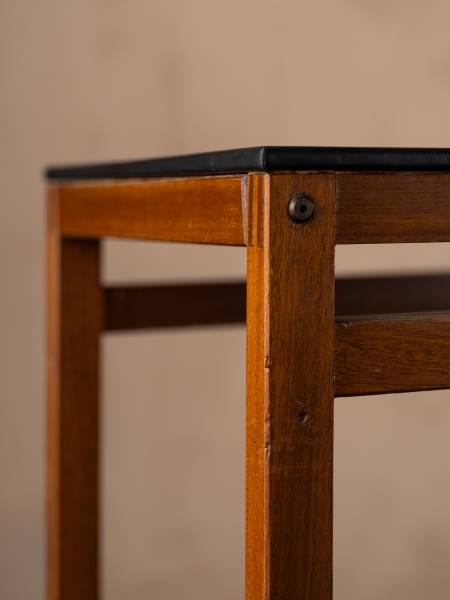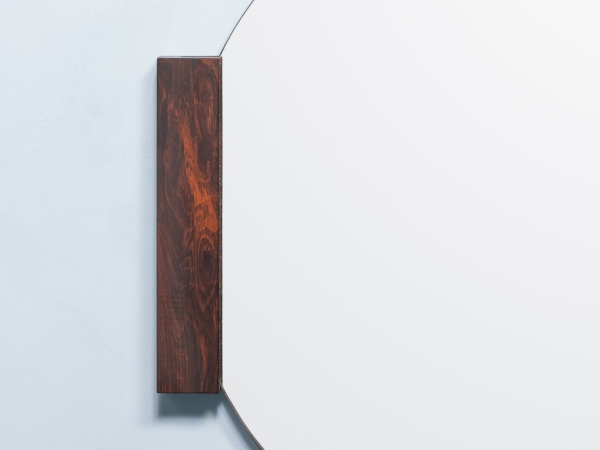André Sornay
André Sornay (1902-2000) joined Lyon art school before taking over the family business after his father’s death in 1919, where he completely revolutionized its production, trading classical furniture copies for sleek, modern lines.
Influenced by Bauhaus and the Stijl movement, where the synthesis of art and architecture was a central aim, Sornay belonged the Union des Artistes Modernes, an association of architects, artists and decorators wishing to design forms suited to modern life. This group included Pierre Chareau, Francis Jourdain, Le Corbusier, and Charlotte Perriand, all of who were eager to break away from traditions and democratize art.
Sornay’s creations, in particular are characterized by pure and geometric lines, harmonious proportions and huge practicality. The materials used combine tradition and modernity: precious woods, permatex products, rubber, Duco lacquer, and metal. Sornay’s first big innovation occurred during the 1929 depression, and was later registered as a patent in 1932. The innovation stressed on a new assembling technique, called the "cloutage." This process pertained to the application of fine wood veneered panels onto the structure of a furniture item, using a row of studs. Sornay’s aligned studs became a trademark of his work as well as an element of decoration. This patent led, in turn, to the manufacture of "clouté furniture," which distributed in small series and which was accessible to most. Other patents followed such as the "tigette SORNAY" (the SORNAY rod) in 1953, described as a "combinable and removable part for the furniture and construction trades".
Sornay mainly exhibited his work at the Lyon autumn fairs but did participate in two Parisian exhibitions. The first in 1925 was the Exposition Internationale des Arts Décoratifs Industriels et Modernes, where his work seemed misunderstood. Twelve years later in 1937, he was awarded the bronze medal for the display of his own personal study at the Exposition Internationale des Arts et Techniques dans la Vie Moderne.
Influenced by Bauhaus and the Stijl movement, where the synthesis of art and architecture was a central aim, Sornay belonged the Union des Artistes Modernes, an association of architects, artists and decorators wishing to design forms suited to modern life. This group included Pierre Chareau, Francis Jourdain, Le Corbusier, and Charlotte Perriand, all of who were eager to break away from traditions and democratize art.
Sornay’s creations, in particular are characterized by pure and geometric lines, harmonious proportions and huge practicality. The materials used combine tradition and modernity: precious woods, permatex products, rubber, Duco lacquer, and metal. Sornay’s first big innovation occurred during the 1929 depression, and was later registered as a patent in 1932. The innovation stressed on a new assembling technique, called the "cloutage." This process pertained to the application of fine wood veneered panels onto the structure of a furniture item, using a row of studs. Sornay’s aligned studs became a trademark of his work as well as an element of decoration. This patent led, in turn, to the manufacture of "clouté furniture," which distributed in small series and which was accessible to most. Other patents followed such as the "tigette SORNAY" (the SORNAY rod) in 1953, described as a "combinable and removable part for the furniture and construction trades".
Sornay mainly exhibited his work at the Lyon autumn fairs but did participate in two Parisian exhibitions. The first in 1925 was the Exposition Internationale des Arts Décoratifs Industriels et Modernes, where his work seemed misunderstood. Twelve years later in 1937, he was awarded the bronze medal for the display of his own personal study at the Exposition Internationale des Arts et Techniques dans la Vie Moderne.



